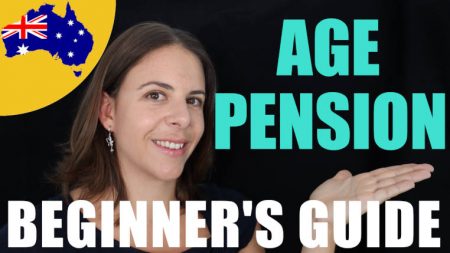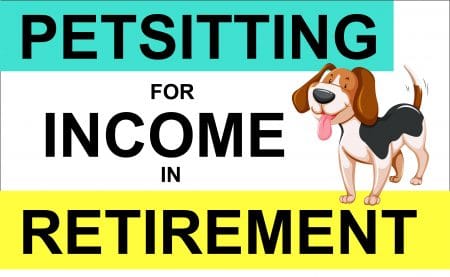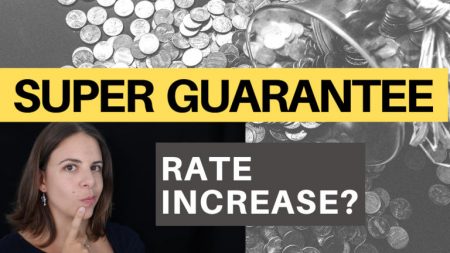
Age Pension Assets Test – Easily Explained!
- RetireOn
- Updated: May 20, 2022
Do you know if you are eligible for the age pension if you own a million-dollar house? Do you know how many assets you can have on age pension? What are the assets and how are they measured?
In this post, we are going to take a more in-depth look at the assets test. The assets test is one of the eligibility requirements of the Age Pension, and it also determines how much you can get.
We will see what is considered an asset by Centrelink, what isn’t considered an asset, how the value of them is determined, discuss the limits in place, and how your Age Pension is reduced if you go over the limit.
Video Guide
What Is Considered An Asset?
Essentially, an asset is everything you own that can be converted into cash. There are exceptions of course, and we’ll go over those later in this post.
There are 11 different assets and asset classes. In this post, we will only be covering Real Estate, Granny Flat Interest, Financial Investments, Superannuation Investments, Income Streams, and other assets.
Real Estate
We’ll start with the most important asset first – real estate. And the most important point:
The house you own and currently live in is NOT considered in the assets test.
So, if you own a one-million-dollar house, you can still be eligible for the aged pension – the exception is if you primarily use it for business purposes. All other real estates that you own in full, jointly, privately, or within a business structure, will be considered in the assets test.
Granny Flat Interests
This rule applies if you live, for example, with your children and you have given them some money, signed over the house, or any other assets as a form of payment. This doesn’t have to be your children, though. It can be any other person as well.
The value you gave them in the form of assets (or the house) will be assessed against the value of the house that you live in, but don’t own.
If you would like more information on this, you can go to the Human Services website to learn more.
Financial Investments
Any financial investments you hold will be a part of your assets test. This includes everything from bank accounts, cash, term deposits, loans, managed investments, securities, shares, bonds, and so on.
You can click here for a complete list of financial investments.
Superannuation Investments
If you are under the age limit for the age pension, then your superannuation investments are not considered in the assets test. Once you are over the age limit, it will then be considered.
However, if your super pays you a pension, then this may be considered in the income streams during the assets test, which leads me to the next section:
Income Streams
There are two categories. One is the pension paid by the superannuation, and the other is income through annuities.
Annuities are income streams purchased from life companies and can be bought with either regular money or superannuation money. The Australian Government Department of Human Services goes over this in more depth.
Other Assets
This is essentially everything else you own, such as:
- Cars, boats, and caravans
- Licences for fishing or taxi
- Surrender value of life insurance
- Trading, hobby, or investment collections
- Cryptocurrency
- Household items, and;
- Personal items.
What Is Excluded From The Assets Test?
There is actually a very long list of excluded assets. From this list, I believe there are three significant points worth mentioning.
- Property or money left to you in an estate
- Accommodation bonds paid on entry to a residential aged care facility
- Cemetery plots and prepaid funerals.
I never realised that this was a concept, but it makes complete sense, don’t you think? If you are planning the last chapter of your life, this could definitely make a difference in your assets test.
How The Value Of An Asset Is Determined
In general, the value of an asset is how much you could receive if you sold it at market value. From that, Centrelink deducts any debt secured against the asset.
To clarify this, let me provide an example.
You own an investment property or a rental property that has a market value of $500,000. Against that, you have a mortgage of $300,000.
Centrelink deducts this debt of $300,000 from the market value of $500,000 and only considers the $200,000 as the value of your house as an asset. This result will be the value of this investment property that is used in the assets test.
Limits of the Assets Test
Now that you know what is considered an asset and can determine the value of your assets, you can apply this knowledge to all the assets you have and therefore estimate the total amount.
Then, you need to check if you are within the limits – in other words, you need to know how much you can own before it affects your age pension rate (as of 8 July 2019).
|
Homeowner |
Non-homeowner |
|
|
Single |
$263,250 |
$473,750 |
|
Couple, Combined |
$394,500 |
$605,000 |
So, what happens if you own more assets than the limits, and how does this affect your rates?
According to the social security guide on the government website (last updated in January 2017), every $1000 in assets over the limit will reduce your age pension rate by $3 per fortnight for both single and couples combined.
These are the essential basics of what you need to know for the assets test! I hope this post helps you to understand how it works and how it may affect your age pension rate. For more general information about the age pension in general, read
- Age Pension Australia – In A Nutshell
- An Overview of INCOME TEST (Age Pension)
- Deeming Explained Simply – Age Pension Income Test
If you have any questions or thoughts, please be sure to let me know in the comments below!
Also, if you would like to further educate yourself on everything retirement-related, be sure to check out my YouTube Channel and our other informative articles on Retire On.










